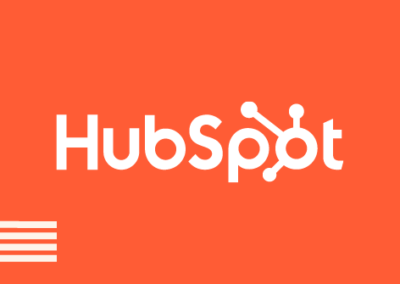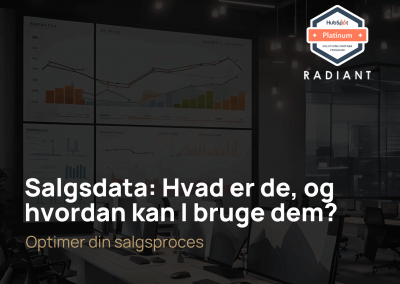Business intelligence (BI) supports and improves decision-making in your business. BI offers many benefits that can provide valuable insights and lead to improved business performance in your organization.
In this article, we review:
- What is business intelligence (BI)?
- How BI can create value for your business
- Other benefits of using BI
- 10 systems for your business intelligence
- 5 steps to implementing BI
What is business intelligence (BI)?
Business Intelligence (BI) refers to technologies, applications, strategies and practices used to collect, analyze, integrate and present business information.
The purpose of BI is to support and improve decision-making based on data. It involves the use of data analytics tools and applications to understand complex business data and transform that data into actionable insights that can drive strategic and tactical business planning.
The core elements of BI include:
- Data collection: Collects data from internal systems and external sources.
- Data integration: Combines data from different sources and prepares it for analysis.
- Data storage: Using databases, data warehousing or data marts to store data.
- Data analytics: Using statistical analysis, queries and other tools to extract insights from data.
- Reporting and visualization: Present data analysis in an easy-to-understand form through reports, dashboards and visualizations.
- Decision support: Provides information and analytics that help managers and business users make informed decisions.
BI systems allow companies to access and analyze data collections and present analytical results in reports, overviews, dashboards, graphs and maps to provide users with detailed intelligence about the state of the business. This can include various aspects such as market and consumer trends, the efficiency of business processes, and financial performance, enabling businesses to make informed decisions.
How BI can create value for your business
Business Intelligence (BI) plays a central role in optimizing business processes and strengthening decision-making. BI can be applied in three key areas: strategic, tactical and operational levels. Each level contributes to business success in unique ways:
Strategic level
At the strategic level, BI allows management to work with long-term goals and trends, which is essential for driving robust growth. BI tools collect and analyze large amounts of data from both internal and external sources, allowing management to:
- Identify market trends: Understand how the market is evolving and where the company can best position itself.
- Plan for long-term growth: Predict future needs, opportunities and risks, giving management a solid foundation for developing strategies.
- Benchmark performance: Compare company performance against industry standards or competitors to identify areas for optimization.
- Support innovation: Leverage data to discover new product or service opportunities based on customer needs and market developments.
Example: A business can use BI to predict changes in customer demand by analyzing macroeconomic trends and seasonal patterns.
Tactical level
At the tactical level, BI helps middle managers and team leaders optimize and adapt operational strategies based on historical data and analytics. This makes it possible to:
- Identify opportunities: Discover growth potential in specific product categories, markets or geographies.
- Predict future outcomes: Using predictive analytics, businesses can predict challenges or success opportunities.
- Adapt processes: Optimize internal workflows based on insights into how best to use resources.
- Evaluate effectiveness: Measure whether tactical actions are leading to desired results and adjust them continuously.
Example: A marketing department can analyze past campaign performance and use these insights to tailor future campaigns, increasing ROI.
Operational level
At the operational level, BI supports day-to-day business activities by providing real-time insights and tools for efficient management of processes. This includes:
- Monitoring KPIs: BI tools provide access to dashboards that show real-time data on production levels, sales figures or stock status.
- Rapid problem solving: Identify bottlenecks and inefficiencies so problems can be solved proactively rather than reactively.
- Automate routine tasks: Automated reports and alerts reduce workload for employees and reduce the risk of errors.
- Improving the customer experience: BI gives frontline employees insights into customer behavior so they can offer better and more personalized service.
Example: A manufacturing company can monitor its production lines in real-time to make sure there are no delays or quality issues, improving delivery times to customers.
BI’s holistic approach ensures that all levels of the organization are working from the same data-driven understanding. This creates better alignment between strategic goals, tactical decisions and operational actions, strengthening overall efficiency and competitiveness.
Other benefits of using BI
Business Intelligence (BI) systems offer a range of benefits that can transform data into valuable insights, leading to more informed decisions and improved business performance.
Here are some of the main benefits of implementing BI in an organization:
Improved decision making
- Faster access to relevant data: BI tools give managers and decision makers quick and easy access to the data they need, significantly reducing decision time.
- Data-driven decisions: Basing decisions on data analysis rather than intuition or guesswork increases the accuracy and efficiency of those decisions.
Increased operational efficiency
- Identifying business inefficiencies: BI can help identify bottlenecks or inefficiencies in business processes, enabling optimization and improvement.
- Performance monitoring: Regular reporting and dashboards provide continuous monitoring of business performance against goals and KPIs.
Competitive advantages
- Market insights: BI tools can analyze market and consumer trends, allowing businesses to adapt their strategies and gain an advantage over competitors.
- Predictive analytics: Advanced BI features, such as predictive analytics, can help businesses predict future trends and prepare for them.
10 BI tools to grow your business
To implement and utilize Business Intelligence (BI) effectively, companies can choose from a wide range of systems and platforms, each offering unique features and benefits. Here are some of the most popular and powerful BI systems available on the market:
1. Microsoft Power BI
Power BI is an easy-to-use yet powerful BI solution from Microsoft that offers in-depth data analysis, visualization and dashboard sharing. It integrates seamlessly with other Microsoft products like Excel and Azure, making it a popular choice for many businesses.
- Best for: Businesses of all sizes using Microsoft products
- Strengths: Easy to use, integrates with Excel and Azure, in-depth data analysis
- Price: Free edition, then paid plans
2. Table
Tableau is known for its ability to create complex and beautiful data visualizations. It offers flexible deployment options, including both on-premise and cloud-based solutions, making it a great choice for businesses of all sizes.
- Best for: Businesses that want to create complex and beautiful data visualizations
- Strengths: Flexible deployment options, intuitive interface, powerful data analysis capabilities
- Price: Free edition, then paid plans
3. Qlik
Qlik offers two main products: QlikView and Qlik Sense. These BI tools are known for their associative model that allows users to explore data connections in an intuitive way. Qlik is strong in data integration and self-service BI.
- Best for: Companies that want self-service BI and strong data integration
- Strengths: Associative model, intuitive interface, easy to use
- Price: Free edition, then paid plans
4. SAP BusinessObjects
SAP BusinessObjects is a comprehensive BI suite that excels in reporting, visualization, and data analysis. This solution is particularly suitable for large companies that already use other SAP products.
- Best for: Large enterprises using other SAP products
- Strengths: Reporting, visualization, data analysis
- Price: Contact SAP for pricing information
5. IBM Cognos Analytics
IBM Cognos is an enterprise-level BI platform that offers a wide range of BI capabilities, including dashboarding, reporting, and advanced analytics. It is designed to help businesses make informed decisions based on data.
- Best for: Large organizations that want an enterprise-level BI platform
- Strengths: Wide range of BI features, dashboarding, reporting, advanced analytics
- Price: Contact IBM for pricing information
6. Oracle BI
Oracle BI is a comprehensive suite of BI tools and technologies that includes reporting, ad hoc analysis, OLAP, dashboards, and scorecards. It is suitable for organizations seeking an integrated approach to BI.
- Best for: Businesses that want an integrated approach to BI
- Strengths: Comprehensive suite of BI tools, reporting, ad hoc analysis, OLAP, dashboards, scorecards
- Price: Contact Oracle for pricing information
7. Looker
Looker, now part of Google Cloud, is a modern data exploration tool that enables users to explore, analyze and share business insights. It is highly integrated with the Google Cloud Platform, making it an attractive solution for companies already invested in the Google ecosystem.
- Best for: Businesses using Google Cloud Platform
- Strengths: Modern data exploration tool, intuitive interface, integrated with Google Cloud
- Price: Contact Google for pricing information
8. Domo
Domo is a cloud-based BI platform that offers a wide range of BI and analytics features. It is known for its ease of use and ability to integrate with a wide range of data sources, including CRM systems, ERP systems, marketing platforms and social media.
- Best for: Companies that want a cloud-based BI platform with ease of use and broad data integration
- Strengths: Wide range of BI and analytics capabilities, including reporting, dashboarding, ad hoc analysis, forecasting and predictive analytics
- Price: Various pricing plans starting from $1,500 per month
9. MicroStrategy
MicroStrategy is a comprehensive BI platform that offers powerful analytics, mobile reports, and hyper-intelligence capabilities to help companies automate data analysis, discover hidden patterns in data, and make more accurate decisions. MicroStrategy can give companies a competitive advantage by helping them identify new market opportunities, optimize internal processes, and improve customer satisfaction.
- Best for: Businesses that want powerful analytics, mobile reports and hyper-intelligence capabilities to gain a competitive advantage
- Strengths: Hyperintelligence capabilities include machine learning, natural language processing and artificial intelligence
- Price: Various pricing plans starting from $10,000 per year
10. Sisense
Sisense offers a drag-and-drop interface that makes it easy for users to create interactive dashboards and reports without the need for coding skills. Users can drag and drop data sources, fields and visualizations to create custom dashboards and reports. Sisense is known for its ability to handle large amounts of data and complex data analytics.
- Best for: Businesses in retail, finance, healthcare and manufacturing that want an intuitive drag-and-drop interface for interactive dashboards and reports
- Strengths: Drag-and-drop interface makes it easy for users to create interactive dashboards and reports
- Price: Various pricing plans starting from $500 per month.
Choosing the right BI system depends on a number of factors, including your size, industry, specific data analysis needs and budget. By choosing the system that best matches these criteria, companies can maximize the value of their data and drive informed decision-making.
5 steps to implement BI in your business
Implementing Business Intelligence (BI) requires a strategic and structured approach to ensure that the tools create value and support business goals. The following steps provide a thorough guide to successful BI implementation:
1. Define clear goals and needs
Before implementing BI, it’s important to determine what you want to achieve. Clear goals ensure that the BI solution is aligned with the company’s strategy and priorities.
- Identify key objectives: Is the goal to improve decision making, reduce costs, increase customer satisfaction or predict market developments?
- Involve key stakeholders: Involve both management and departments such as IT, sales, marketing and production to understand their needs and challenges.
- Define KPIs: Establish measurable key performance indicators that can be used to evaluate the success of BI. For example, a KPI could be reduction of decision time or increased sales through better analytics.
Example: A retail business may aim to reduce inventory costs by 20% through more accurate sales forecasting.
2. Choose the right tools
There is a wide range of BI tools available and it’s crucial to choose the solution that best matches your business needs and resources.
- Consider the size and complexity of your business: small businesses can get by with easy-to-use tools like Power BI, while larger organizations may need more complex solutions like SAP BusinessObjects or Tableau.
- Integration options: Make sure the tool integrates with existing systems such as ERP, CRM and database systems.
- Scalability: Choose a solution that can grow with your business and handle increasing amounts of data.
- Ease of use and support: Prioritize tools that are easy to learn and offer support and training materials.
Example: A medium-sized e-commerce business might choose Looker for its strong integration with Google Cloud and advanced analytics capabilities.
3. Prepare and train employees
Successful BI implementation depends heavily on the ability of employees to use the systems effectively.
- Build understanding of BI: Educate employees on what BI is and how it can help them in their roles.
- Customize training by user level: Provide basic training for regular users and more advanced training for analysts and managers who need to work with data on a deeper level.
- Appoint BI ambassadors: Designate key people in each department to act as internal experts and support colleagues.
- Emphasize the value of data: Create a culture where data-driven decisions are valued and employees are encouraged to use data in their daily work.
Example: A sales department can be trained to use dashboards to monitor pipeline activities and closing rates.
4. Implement in phases
Instead of rolling out the BI system all at once, implementation should be gradual to minimize risk and maximize learning.
- Pilot project: Start with a smaller department or a specific project to test the BI solution.
- Evaluate and adjust: Use feedback from the pilot phase to improve the system and process.
- Gradual roll-out: Once the pilot project is successful, BI can be implemented more widely in the company.
Example: A finance department can start by automating reporting processes before rolling out the system to other departments.
5. Monitor and optimize continuously
BI implementation is not a one-off task. To get the most out of the system, it’s important to monitor its performance and make continuous improvements.
- Monitor BI usage: Analyze how employees use the system and identify any challenges.
- Evaluate effectiveness: Compare KPIs with the goals set at the start.
- Update the system: Make sure the BI solution is updated with new functionality and datasets to stay relevant.
- Customize as needed: As business needs change, the BI solution must be adaptable.
Example: A company may find that certain dashboards are not being used and replace them with more relevant analytics.
Implementing BI is an ongoing process that requires careful planning, employee involvement and a willingness to adapt the system to the needs of the business. When implemented correctly, BI can transform the way your business works and secure a competitive advantage in the market.



